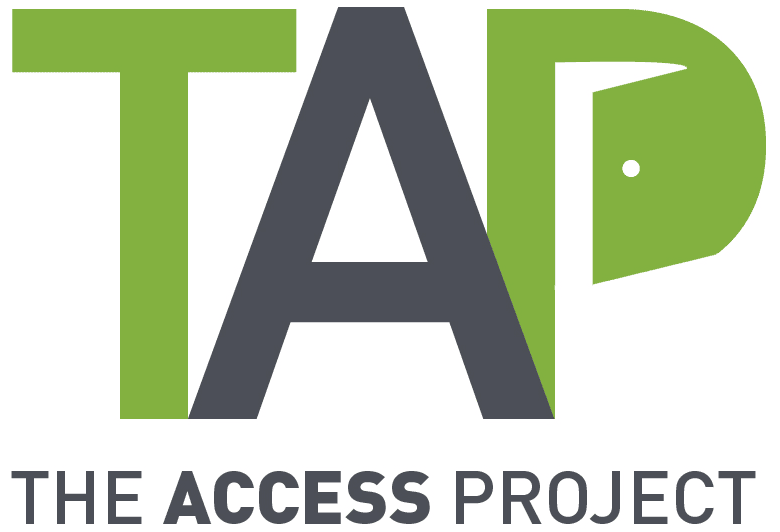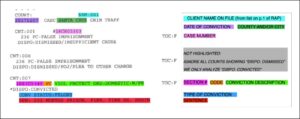
Frequently Asked Questions: Volunteer Workshop
Rising Scholars Navigation
Getting Started
It is helpful to read through the whole RAP sheet to organize the cases in chronological order. To understand how to differentiate cases, check out other FAQ answers.
It is useful to plot the chronology of the individual before starting the "RAP Analysis" step.
Please try to copy and paste info - or slow down when retyping - to ensure precision (i.e. with case #).

- Four asterisks define a case’s start + finish
- Each case may have one or more convictions
- Often, several counts have no conviction because the client agreed to a plea deal, with one conviction
-
- Yellow = conviction. This is the key info!
-
- Orange = custody notes from Department of Corrections Often more detailed than court record, this is supplementary information, not a separate conviction. Can be connected to yellow cases by matching the case number.
-
- Green = already dismissed
- Purple = conviction status reduced from felony to misdemeanor. Choose "felony previously reduced to a misdemeanor" as the Type of Conviction.
No.
Not highlighted = not pertinent!
No conviction = no expungement needed.
Orange highlights = custody notes. They are often more detailed than yellow info (court notes), and provide updated/supplementary information. Sometimes it is just the same information.
Orange custody notes can be connected to yellow court notes by matching the case number.
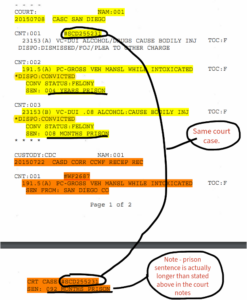
Many times, defendants enter into plea deals. If they are charged with several counts, the prosecutor may drop several of them if the defendant pleads guilty to one of them. Thus, sometimes only one count has a conviction.
The Online Portal
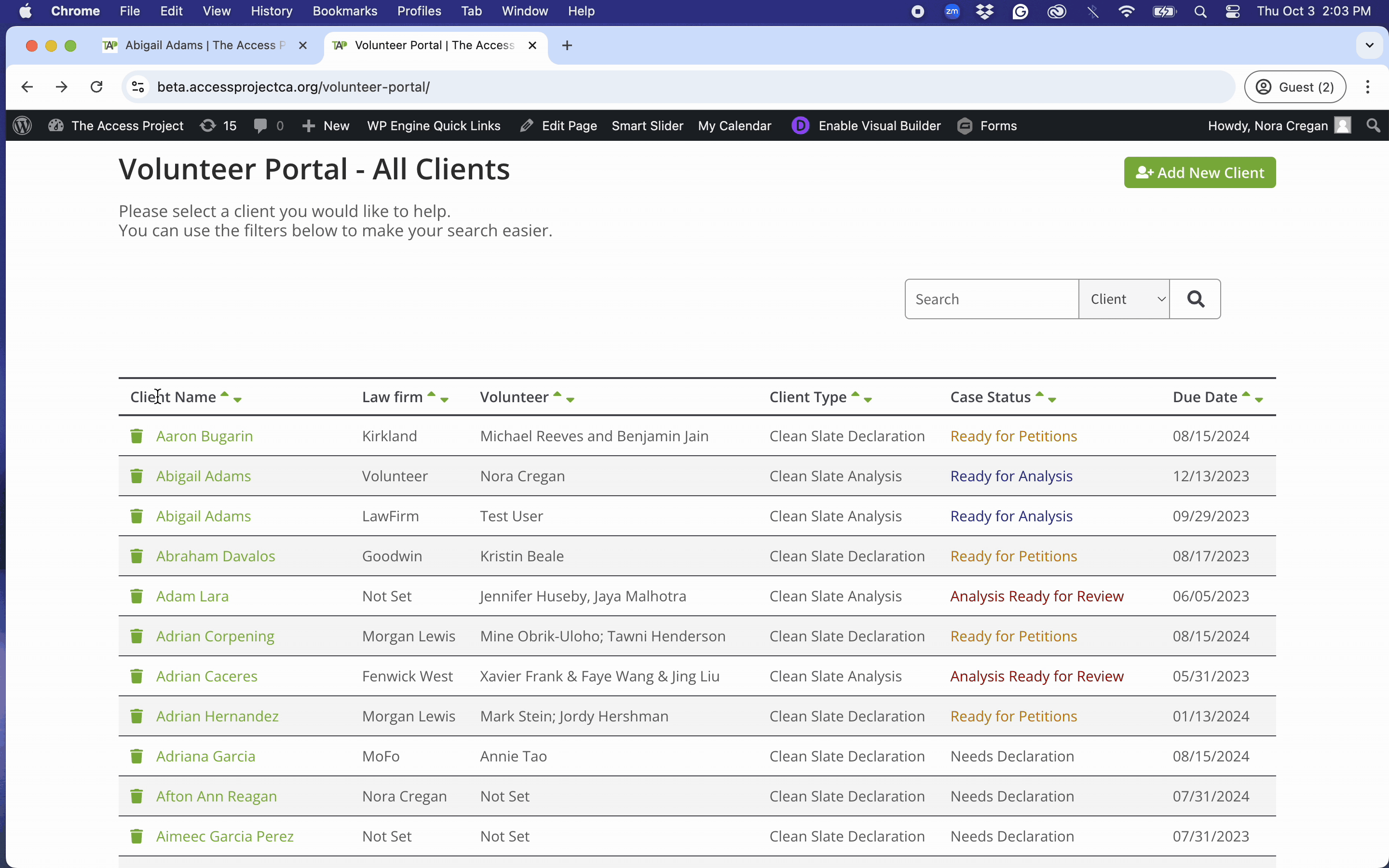
If you would like a slower, in-depth video on creating a case, watch below:
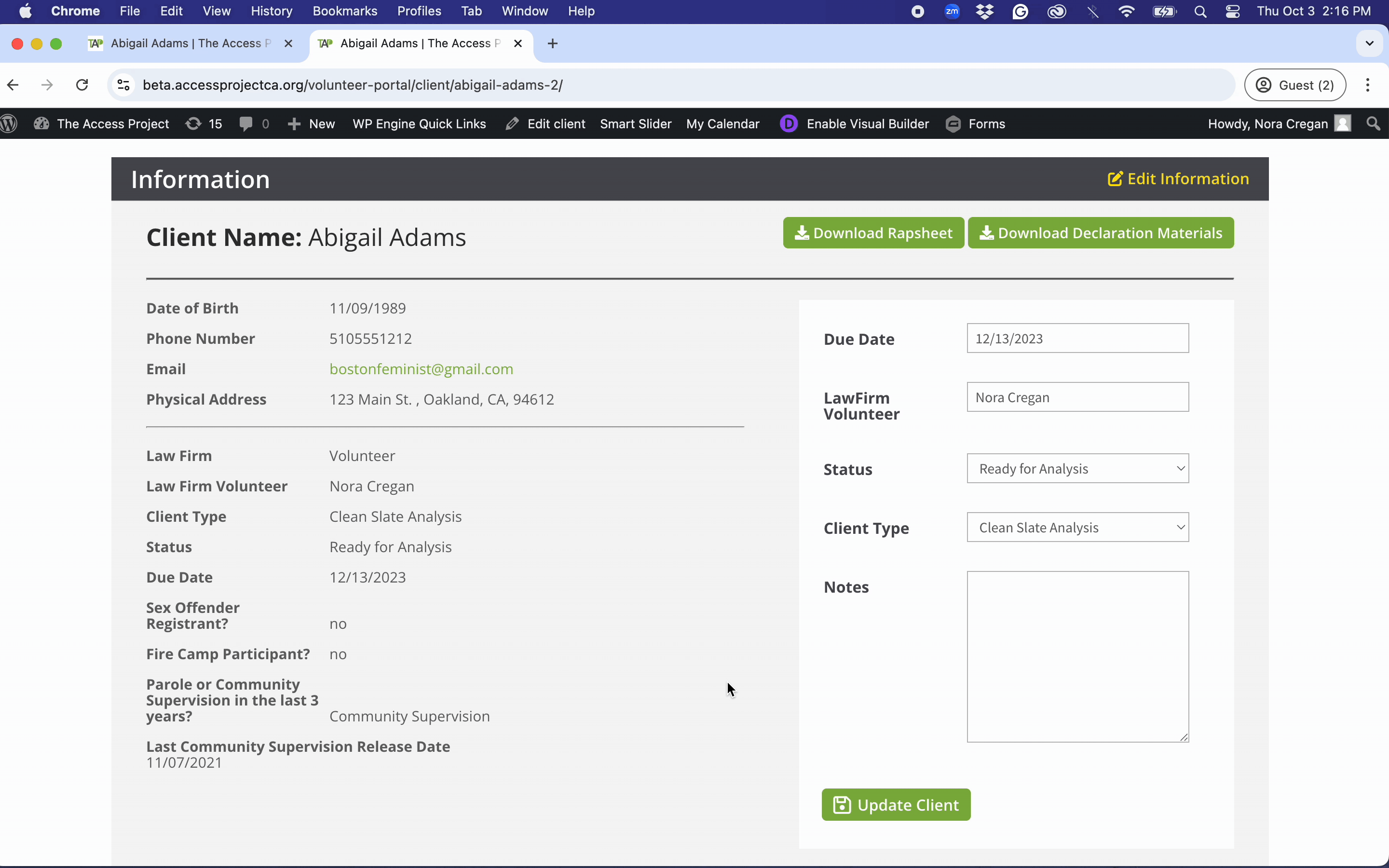
If you would like a slower, in-depth video on creating convictions, watch below:
Yes, add each conviction individually within the broader "header" of the case:
- Many cases have multiple counts and/or convictions
- Within the case, add in every conviction separately
- There is a button to add another conviction when you are done with the first
- If you are unsure of the county, use google
- It’s okay to check “Unsure” if you’re unsure of the court info
The sentence applies to each conviction in the case.
Analysis Step
The next step is to Began Analysis - see below.
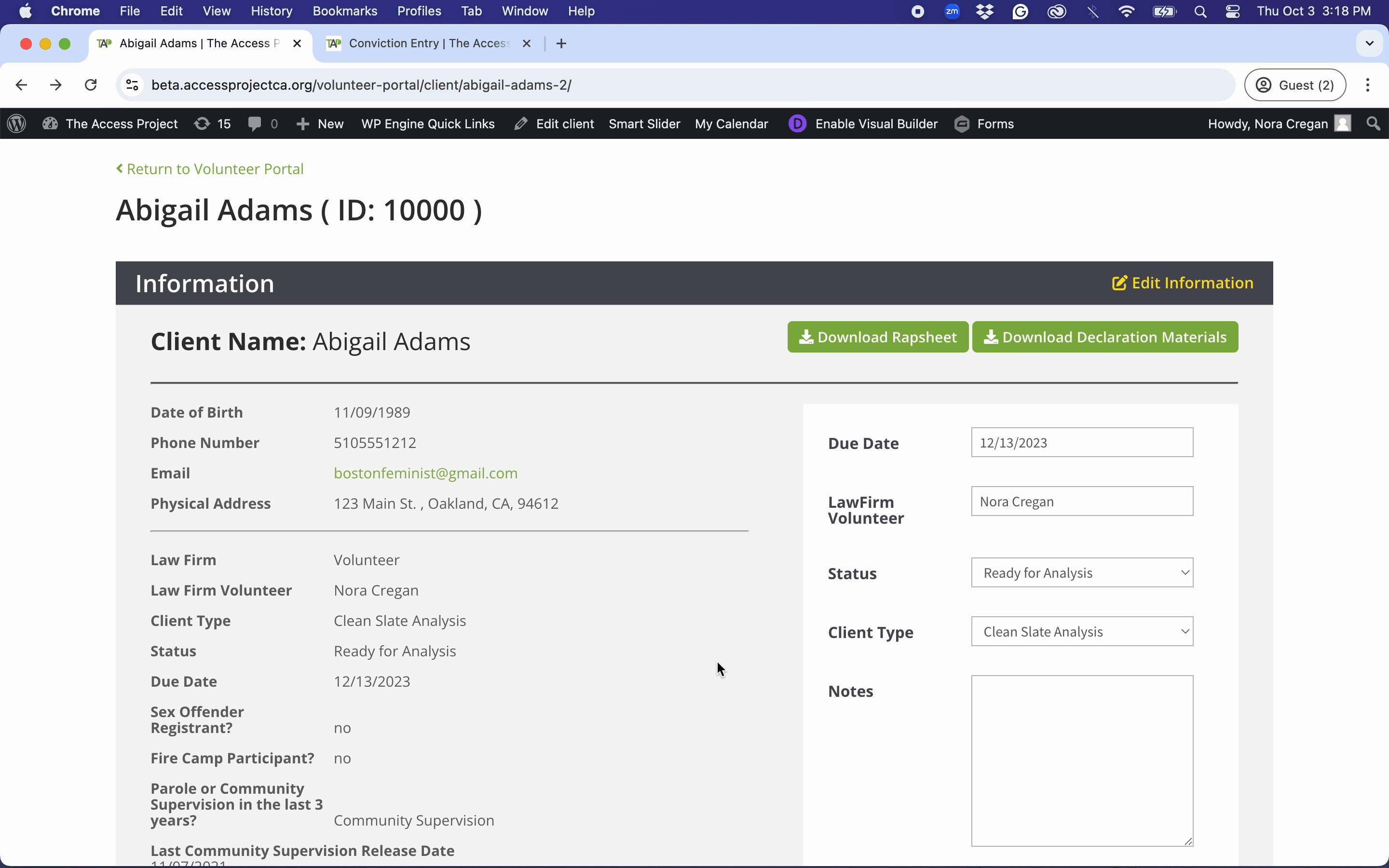
Yes. A distinct analysis is needed for each conviction.
If you don’t see the button, you can zoom out by pressing the following keys:
-
- On Mac: Press Command (⌘) + the dash key (-).
- On Windows: Press Ctrl + the dash key (-).
This will reduce the zoom level, making more content visible on the screen.
There are three dropdown tabs on the left. The first is client info, the second is case info, and the third is conviction info that is specific to the corresponding analysis.
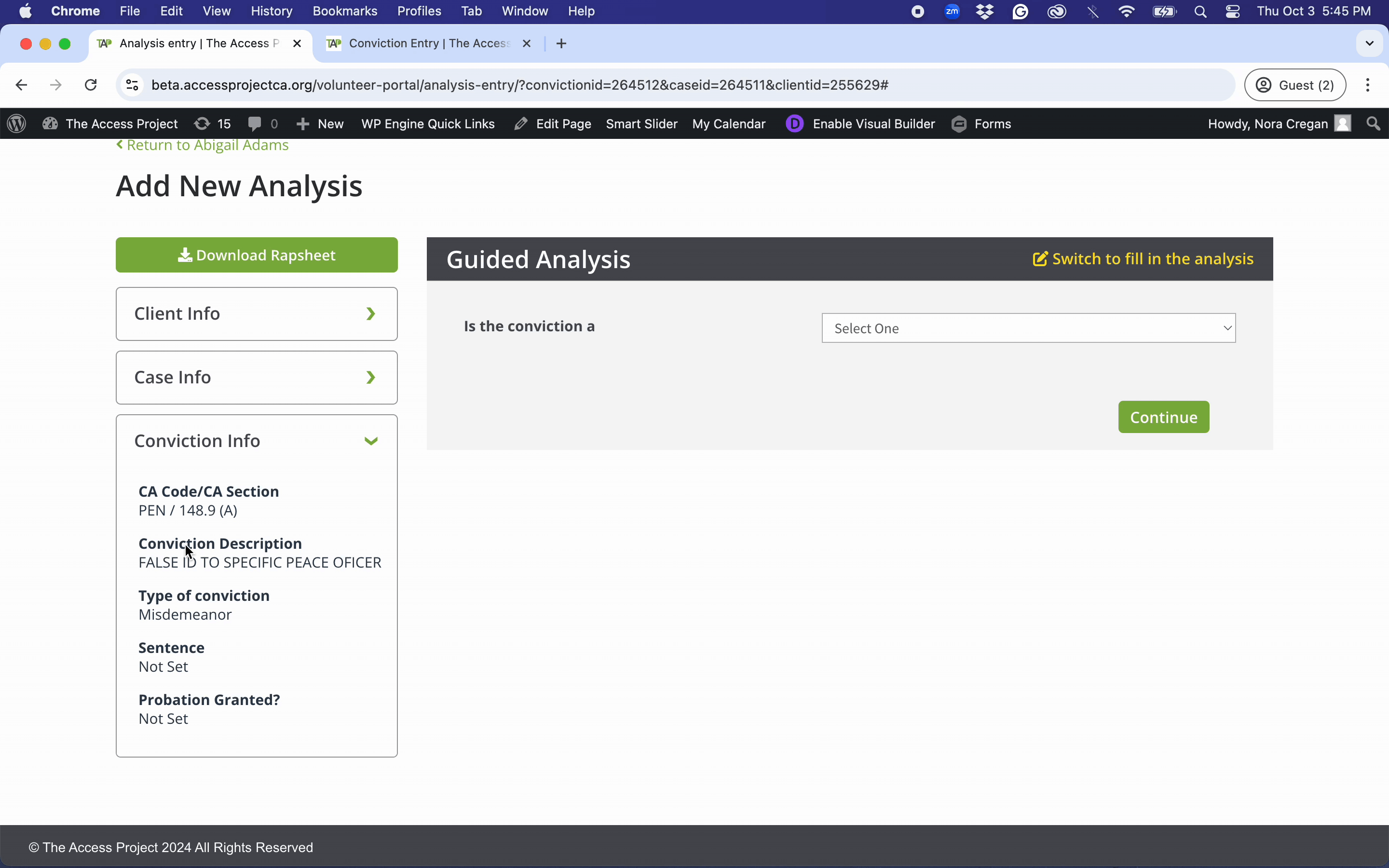
"Sentence completion" means release from parole or supervision. To find it:
- First, look at the client profile (expand "client info" section of the left sidebar. If the client provided the date, it will be there. Often, they don't know it.
- If the client did not provide a date of completion, we need to figure out the latest possible date of completion to determine if they are in the waiting period.
If a conviction status was reduced, it will have been highlighted in purple.
Final Steps
- Save Analysis
- Change status to "Analysis Ready for Review"
- Put your names in place of "Team X" under LawFirm Volunteer
- Write any relevant notes or questions for us in the comments section
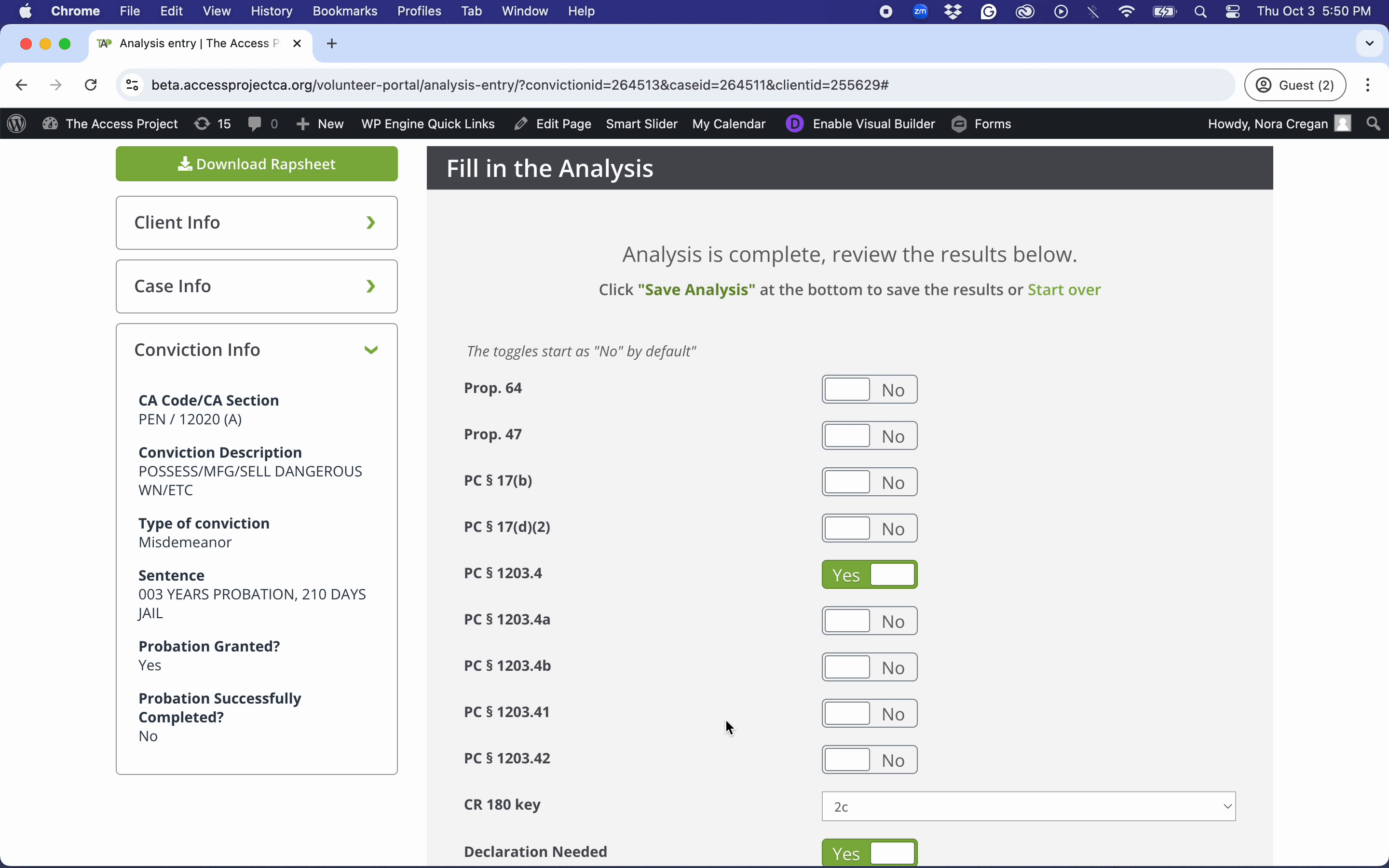
- If anything is odd, ask us about it!
- Please write a comment. There's a "Notes" section at the top of each individual's portal page.
- It’s okay to make a mistake. Our lawyers will review all of your work.
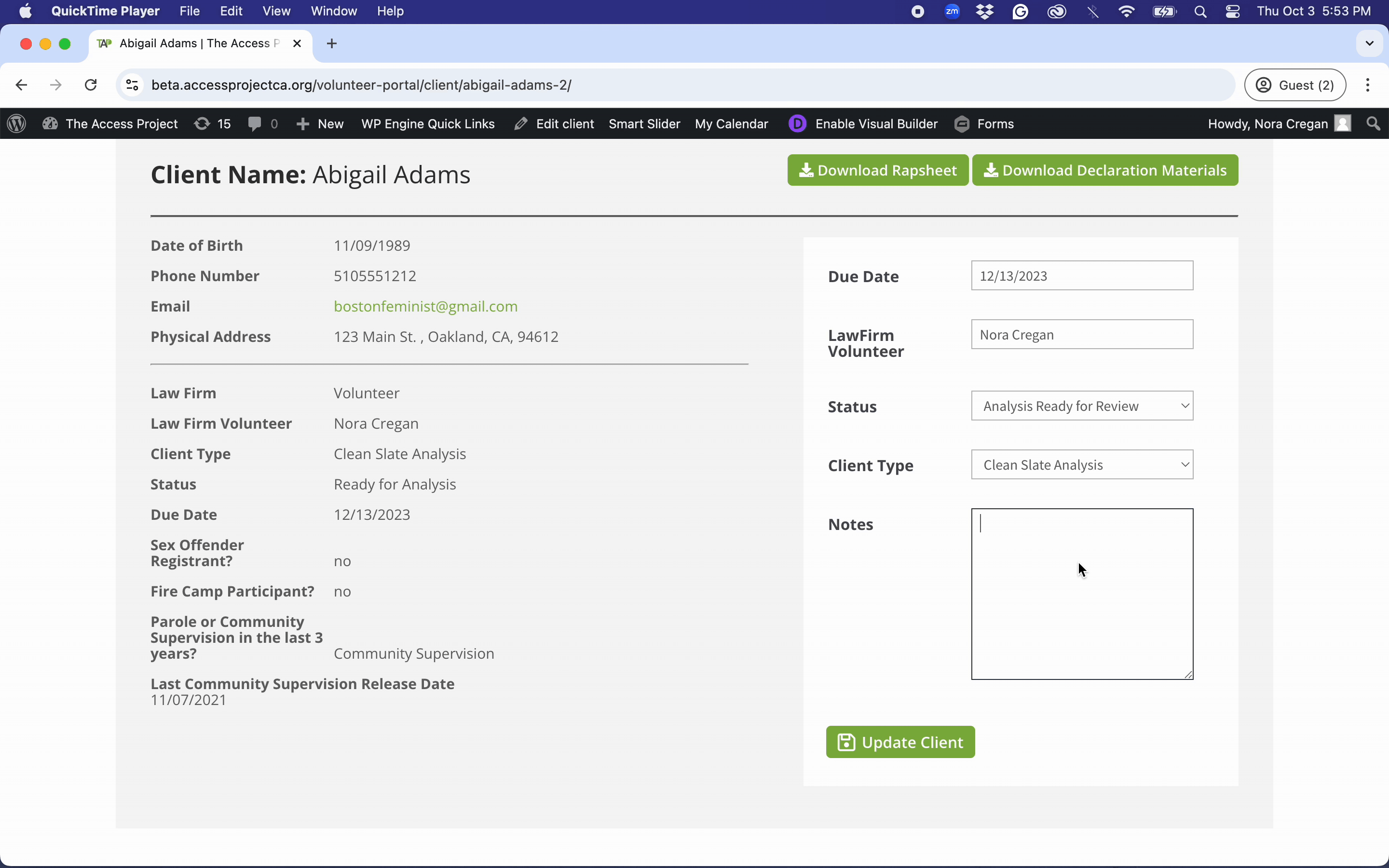
If you are interested in working 1:1 with a student on their petition/declaration, reach out to us at 415-218-3224 or Info@AccessProjectCA.org.
More info on declarations can be found here.
You can also donate to our organization.
Definitions
- Felonies: crimes for which prison is an available sentence
- Misdemeanors: crimes for which jail time up to one year is an available sentence
- Infractions: "citation" crimes for which fine or short jail time are available sentences
- Probation: can be the sentence for any conviction (even homicide!); often paired with jail time of less than one year or fine
- Jail time alone: Jail < 365 days for misdemeanor (can be paired with fine) Jail >365 days = felony jail sentence
- Prison: Will say prison! Usually accompanied by a custody note.
A case is composed of one or more charges that accuse a defendant of breaking the law in some way.
A conviction means that the defendant was found guilty of a specific charge. Not all cases end in convictions.
"Felony jail" refers to incarceration for some felonies that prior to Realignment would have been served in prison.
A jail sentence of less than 1 year, imposed along with probation, is not a felony jail sentence.
Probation
The probation period begins on the date of conviction (it is served in conjunction with incarceration).
Thus, you can calculate the precise end date: [beginning date] + [duration of probation].
Was probation successfully completed?
YES if:
- No violations, modifications, or terminations
- No yellow highlighted convictions/incarcerations that occurred before the end date
- Probation was terminated early pursuant to 1203.3 PC (beware of the language “early termination” or “early dismissal” it rarely means probation was successful)
- Arrest that does not lead to conviction is okay (due process)
NO if:
- Probation violated, modified or reinstated
- “PROB VIOL/REV AND/OR REINSTATE W/SEN MOD”:
For “Probation terminated,” it depends on what follows.
• Not revoked unless followed by prison or > 365 days jail
• Probation revoked and/or custody note for PRISON = probation revoked
Misc
Vehicle Code infractions cannot be expunged. See PC 1203.4a(d)(3).
To determine this you need to search the convictions on the RAP sheet that precede this one to see if the applicant had a prior conviction for a superstrike (the crimes listed on the dropdown). Superstrike convictions are always felonies and and almost always result in very long prison sentences. The answer to this question is almost always no.
If you need help, please contact us.
